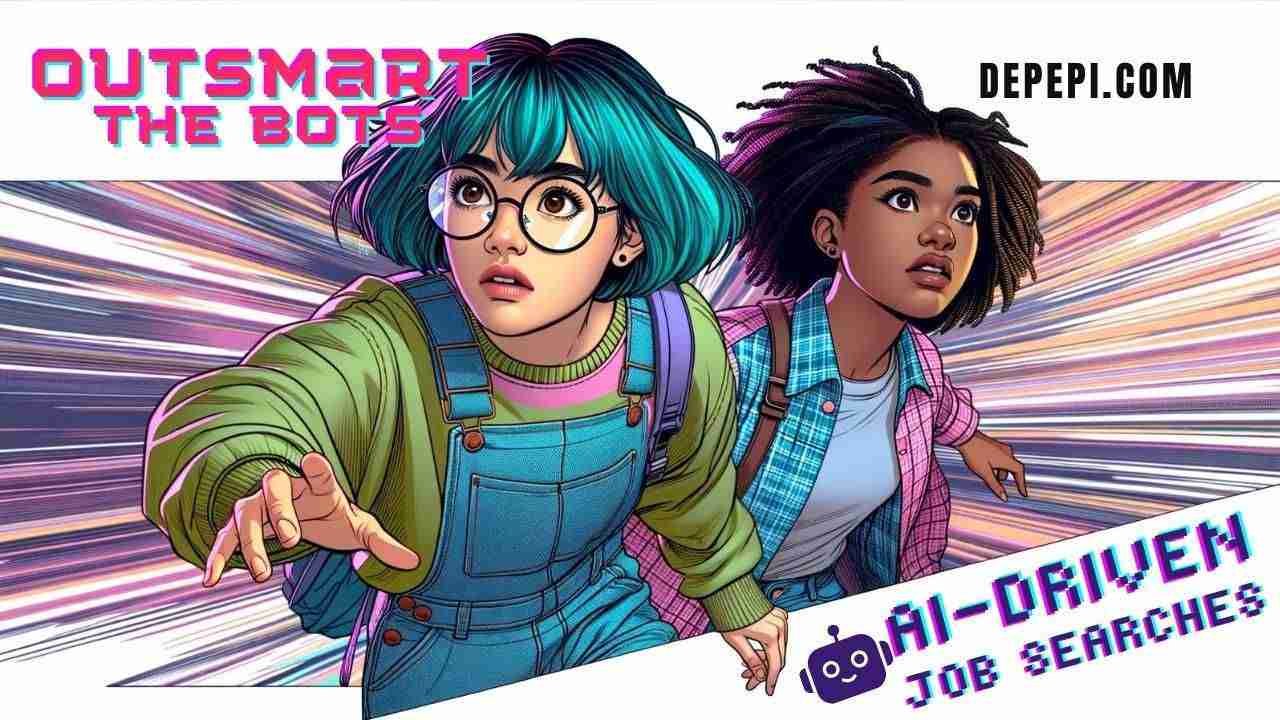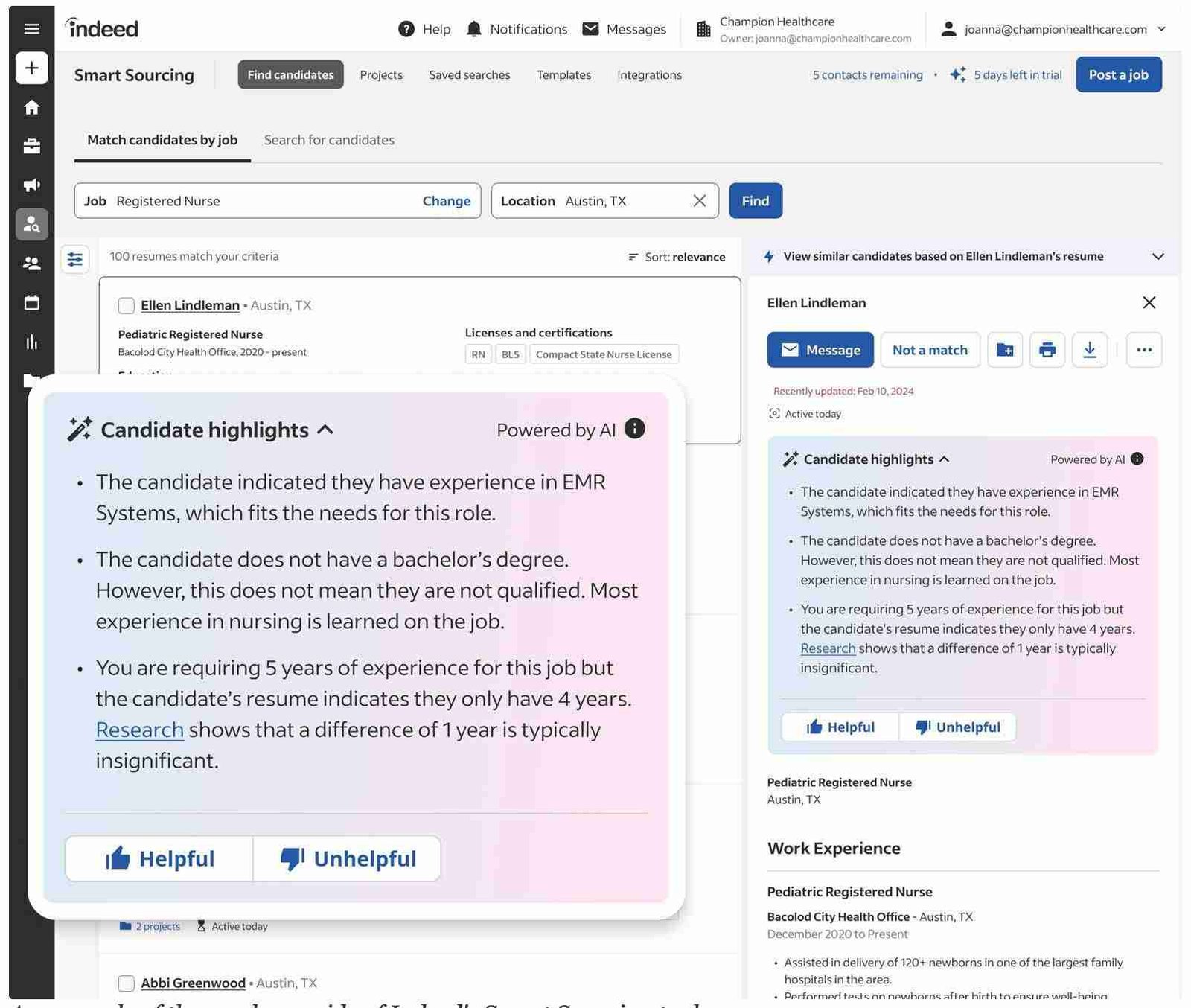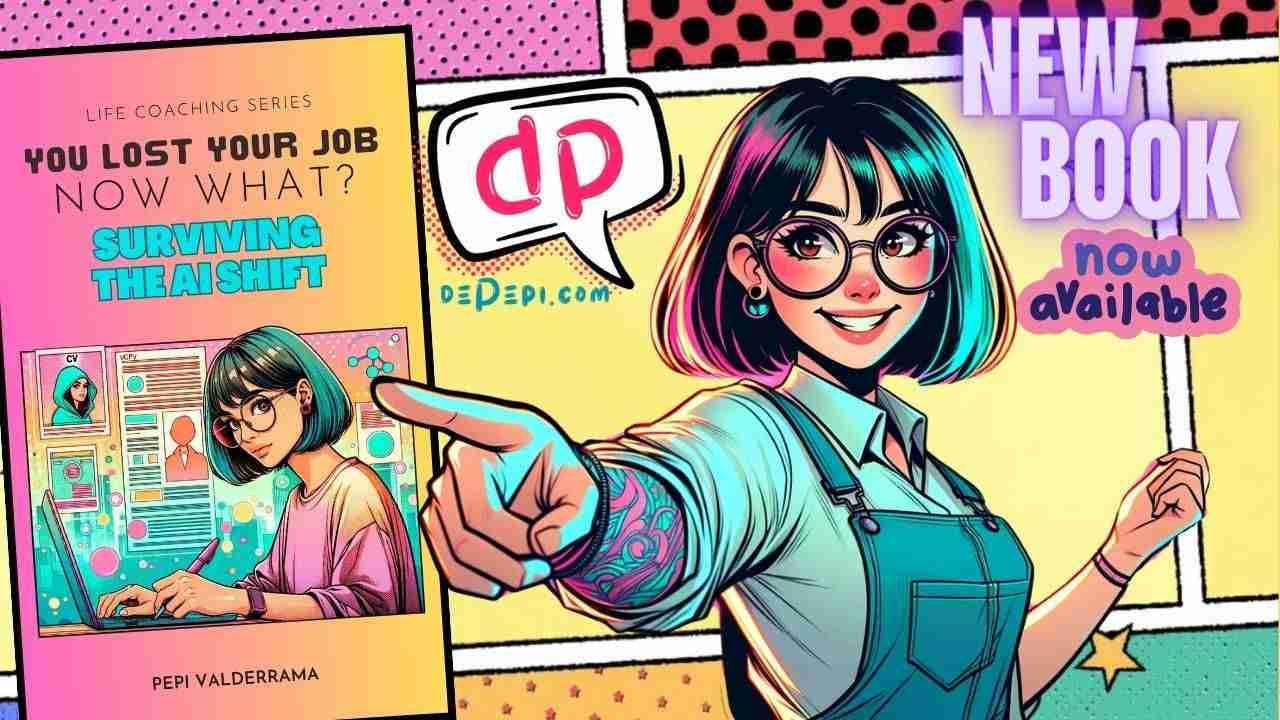AI-Driven Job Searches: Can You Outsmart the Bots with Indeed?

AI-driven job searches are frustrating. However, Indeed promises to save us from months of unfruitful ones. Indeed’s Smart Sourcing aims to revolutionize how candidates find jobs and how employers connect with potential hires. However, if your profile isn’t well-thought, and you rely solely on searches that will help you search more of the same, your frustration might end up doubling! So, the question is: Are AI tools the best solution for creating resumes that stand out, or is there a more effective approach?
AI-Driven Job Hunting and Recruitment
Indeed’s Smart Sourcing, a suite of AI-powered tools designed to streamline the job search and recruitment process, marks a significant milestone in the integration of AI within the job market. This technology promises to offer “instant recommendations” to employers, connecting them efficiently with relevant candidates. For job seekers, updates to the Indeed Profile and AI-powered writing tools aim to represent individuals to potential employers better.
Yet, this leap towards AI-driven recruitment processes raises important considerations, particularly regarding the potential for algorithmic bias, discrimination, and the loss of personal touch in job applications.
AI-Driven Recommendations
AI-driven recommendations might look like the best new thing, but they can make us miss out on opportunities. Think about Netflix’s search and recommendation system, for example. It is engineered to enhance user experience by tailoring content offerings to individual preferences. Essentially, the more you search for and watch a certain type of content, the more Netflix’s algorithm will suggest similar shows and movies. This personalized approach aims to streamline content discovery, making it easier for viewers to find shows they’re likely to enjoy based on their viewing history.
However, this method carries an inherent drawback: the potential to narrow down the diversity of content that gets recommended. As users are continually presented with options similar to their past preferences, they risk missing out on a wide array of other shows and movies that could potentially capture their interest. This phenomenon, often referred to as the “filter bubble,” highlights the challenge of finding a balance between personalized recommendations and the discovery of new and diverse content.
The same can happen with AI-driven job searches. You might be looking for different types of roles and seniority for several reasons. Yet, if the algorithm thinks you’re searching for senior roles, it might not show you other better opportunities.

Human Insight & ATS Compatibility of Your Profile
While AI offers the allure of efficiency and the promise of eliminating the tedium of job hunting, it’s essential to remember the value of human insight and authenticity in crafting resumes and online profiles. AI tools, no matter how advanced, cannot fully grasp the nuances of individual experiences and the personal stories that make each candidate unique. This is where the significance of learning to prompt effectively comes into play—a skill that I emphasize in my book.
However, you also need always to be ATS compliant while reflecting on your true self. To have the best opportunities, you need to make your profile on Indeed as close as possible to an ATS-compliant resume. You can follow the guidance on “You Lost Your Job. Now What? Surviving the AI Shift” and mirror it on your profile to make sure you have more options to land your dream job.
The Potential Pitfalls of AI in Recruitment
The enthusiasm for AI-powered recruitment tools must be tempered with caution, especially considering the issues of bias and discrimination inherent in AI models. Studies have highlighted how AI can perpetuate stereotypes and under-represent marginalized identities, casting doubt on the fairness and objectivity of AI-assisted recruitment processes. This underscores the need for a responsible and ethical approach to AI in the job market, something Indeed acknowledges but has yet to address fully.
A More Effective Solution: Empowering Job Seekers with Knowledge and Skills
Against the backdrop of these challenges, my book offers an invaluable resource for job seekers navigating the AI-enhanced job application landscape. Unlike standalone AI tools, “You Lost Your Job. Now What? Surviving the AI Shift” provides comprehensive guidance on using AI while ensuring that resumes and job applications retain the authentic essence of the individual’s professional identity. Through prompt engineering, readers learn to communicate effectively with AI, producing results that are not only technically competent but also deeply reflective of their unique career paths.
You can also follow the book’s advice to ensure your profile on Indeed is on point, and you have as many successful opportunities as possible. However, I recommend thinking carefully when doing searches and not shortening the algorithm’s menu.
Plan & Thrive
“You Lost Your Job. Now What? Surviving the AI Shift” (free on Kindle Unlimited) will help you add a new skill to your resume. It also provides a roadmap for job seekers to navigate the new realities of the AI-enhanced job market. By understanding how to use AI to your advantage while maintaining your individuality and integrity, you can stand out to employers and navigate the AI shift with confidence and success.
Need extra guidance? Get Enhance Your Resume With AI—The Guide now. It’s packed with prompting techniques and examples, best practices, and more!






